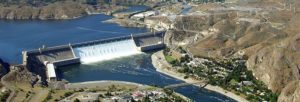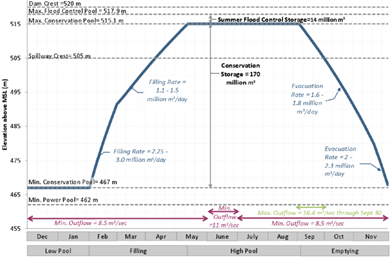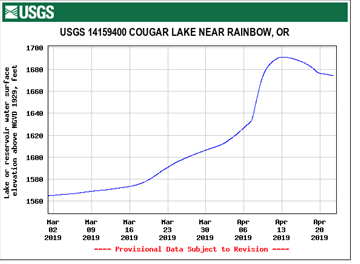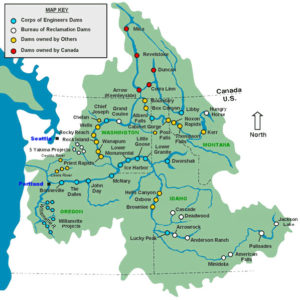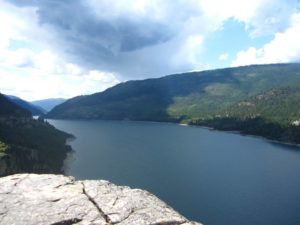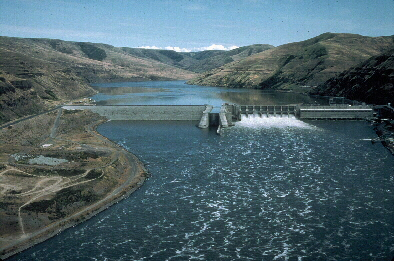Shipping in Pacific Northwest Halted Due to Cracked Barge Lock at Bonneville Dam

Reports of a broken barge lock at the Bonneville Dam on the Columbia River surfaced on September 9th. The crack was discovered last week and crews began working Monday morning on repairs. The cause of the damage is unknown. To begin the repairs, the crews must first demolish the cracked concrete section. It remains unclear, however, when the repairs will be complete.
Navigation locks allow barges to pass through the concrete dams that were built across the Columbia and Snake Rivers to generate hydroelectricity for the West. A boat will enter the lock which is then sealed. The water is then lowered or raised inside the lock to match the level of the river on the other side of the dam. When the levels match, the lock is then opened and the boat exits.
The concrete that needs to be repaired acts as the seal for the lock. The damage to the concrete at the Bonneville Dam resulted in significant leaking—enough that water levels were falling when the lock was in operation. Thus, immediate repair was necessary.
The Columbia River is a major shipping highway and the shutdown means barges cannot transport millions of tons of wheat, wood, and other goods from the inland Pacific Northwest to other markets.
Eight million tons of cargo travel inland on the Columbia and Snake rivers each year. Kristin Meira, the executive director of the Pacific Northwest Waterways Association said that 53% of U.S. wheat exports were transported on the Columbia River in 2017.
According to the U.S. Army Corps of Engineers, about $2 billion in commercial cargo travels the system annually, and it is the top export gate in the U.S. for wheat and barley and the number two export gate for corn.
This shutdown comes as terrible news for farmers in inland Oregon, Washington, and Idaho trying to ship their wheat out. Rob Rich, vice president of marine services for Shaver Transportation, said that farmers truck their wheat to 27 inland grain elevators where it is loaded onto barges headed to the Pacific Ocean. He also stated that rail and trucking are not reliable alternatives.
Make sure to stay tuned to Schroeder Law Offices’ Water Blog for more news that may affect you.
